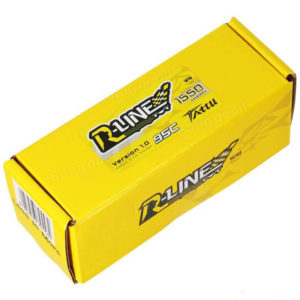Lithium polymer batteries, more commonly known as LiPo, have high energy density, high discharge rate and light weight which make them a great candidate or RC applications.
By learning the basics about LiPo batteries, you will be able to read and understand their specifications.

tattu 1300 4s.jpg600x600 56.3 KB
Battery Voltage and Cell Count (S)
LiPo batteries used in RC are made up of individual cells connected in series . Each cell has a nominal voltage of 3.7V . Therefore battery voltage is often referred to as how many cells in the battery (aka “S”).
1S = 1 cell = 3.7V
2S = 2 cells = 7.4V
3S = 3 cells = 11.1V
4S = 4 cells = 14.8V
5S = 5 cells = 18.5V
6S = 6 cells = 22.2V
For example, we call a 14.8V battery a “4-cell” or “4S” battery.
Voltage affects brushless motors RPM directly, therefore you could use higher cell count batteries to increase your quadcopter’s speed if your motor/ESC and other electroincs support higher voltage.
But a battery with more cells of the same capacity is heavier since it contains more cells. To make a 4S 1000mah battery, you could simply combine two 2S 1000mah, or one 3S 1000mah with an 1S 1000mah.
Nominal voltage for LiPo battery cell is 3.7V. However it’s not the voltage of the battery either when it’s fully charged or fully discharged. The number is come up by manufacturers, and It’s near the middle of safe voltage range, so I guess that kind of makes sense.
LiPo battery is designed to operate within a safe voltage range, from 3V to 4.2V . Discharging below 3V could cause irreversible performance lost and even damage to the battery. Over-charging above 4.2V could be dangerous and eventually cause fire.
However it’s advisable to stop discharging when it reaches 3.5V for battery health reasons. For example for a 3S Lipo, the max voltage is 12.6V, and you should land when the voltage reaches 10.5V (at 3.5V per cell).
LiPo Battery Capacity and Size
The capacity of a LiPo battery is measured in mAh (milli-amp hours). “ mAh ” is basically an indication of how much current you can draw from the battery for an hour until it’s empty.
For example, for a 1300 mAh Lipo, it would take an hour to be completely discharged if you draw a constant 1.3A current from it. If the current draw doubles at 2.6A, the duration would be halved (1.3/2.6=0.5). If you draw 39A of current non-stop, this pack would only last 2 minutes (1.3/39=1/30 of an hour).
Increasing your battery capacity might give you longer flight time, but it will also get heavier in weight and larger in physical size. There is a trade-off between capacity and weight, that affects flight time and agility of the aircraft.
Higher capacity could also give you higher discharge current as you will see in the next section.
Note that, 1000mAh = 1Ah.
C Rating (Discharge Rate)
Lipo batteries for quadcopters these days all come with a C rating. By knowing the C rating and capacity of a battery, we can in theory calculate the safe, continuous max discharge current of a LiPo battery.
Maximum Discharge Current = C-Rating * Capacity
For example an 1300mAh 50C battery has an estimated continuous max discharge current of 65A.
Some batteries come with two C-ratings: “continuous” and “burst” ratings. The Burst rating is only applicable in short period of time (e.g. 10 seconds).
Although C rating could be an useful tool, it has become mostly a marketing tools nowadays.
If C rating is too low, the battery will have a hard time delivering the current to your motors, and your quad will be under powered. You could even damage the battery if current draw exceeds safety rating.
When C rating is higher than what’s required, you won’t gain much performance improvement. Instead the battery would be heavier and you will be carrying extra weight that reduces your flight time.
Discharge Lead (Main Connector)
Rule of thumb, the battery connector should match the one you are using on your copter. If you don’t own a quad yet, choose one, and stick with it.
All Lipo batteries come with 2 sets of wires/connectors: a balance lead and a main lead or discharge lead(Except for 1S batteries which only have a main lead). There are quite a few different connectors used in LiPo batteries. The main differences are shape, weight and current rating.
1S Battery Connectors
1S connectors are tiny and have very low current rating. They are commonly used in brushed micro quadcopters.
2S-6S Battery Connectors
You will find a lot more different types of battery connectors in this category, in fact not all are listed here. But majority of them are not used that often so you don’t need to ever worry about them. For mini quad, the most popular connector is probably the XT60. for smaller one, usually use the xt30.
| JST |
 |
Mainly 2S |
| XT30 |
 |
Mainly 2S and 3S |
| XT60 |
Similar to the Above, only bigger |
Mainly 3S, 4S |
| XT90 |
Similar to the Above but even bigger |
|
| HXT-4mm |
 |
|
| EC3 |
 |
|
| EC5 |
Similar to the Above but bigger |
|
| Deans (T) |
 |
However since XT60 is only rated at 60A, and mini quad are running at higher and higher current and voltage, we might soon see a change in the popular connector used. such as xt90, EC5 etc.
Balance Lead
Balance lead is mainly used for balance charge to ensure all cell voltages are equal. It also allows you to monitor the voltage of each cell.
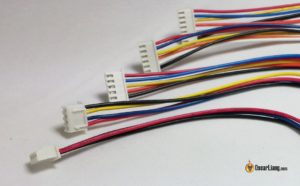
The number of wires in a balance lead starts at 3 for 2S LiPo, and for every increment in cell count, the number of wires also go up by 1.
Internal Resistance (IR)
Internal resistance exists in every battery cell, and IR could be different in each cell of the same LiPo battery. Higher internal resistance reduces the max current the LiPo pack can produce, that why as a LiPo battery gets older or overly used, you will find it losing the punch, or power.
IR isn’t shown on the label, because they can change over time. Lipo internal resistance increases with:
- time/age
- crashes (physical damage)
- over-discharging
- over-heating
- other abusing usage
You can measure IR with dedicated tools, some LiPo charger even comes with IR measuring features.
LiHV
LiHV is a different type of LiPo battery, HV stands for “high voltage”. They are more energy dense than traditional LiPo battery, and allow to be charged up to 4.35V per cell. However there are mix reviews out there regarding the longevity of LiHV, as they might have decrease in performance sooner than normal LiPo’s.
How to choose LiPo battery for quadcopters?
To choose the best Lipo battery for your quad, you first need to know your requirement, the preferred cell count, and what would be the max discharge current.
Find Out How Much Current Your Drone Can Draw
Once you have decided on your choice of motors and propellers size, you should be able to find data online related to that requirement. For example, I am going to use this motor with 5040×3 props, at 100% throttle it draws 36.7A.
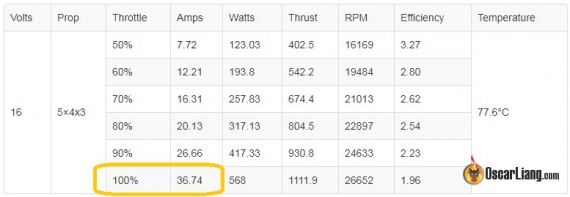
The total max current draw for a quad of 4 motors would be 36.7 x 4 = 146.8A at 100% throttle. If you want to play safe, you could just use this figure and find the battery you want. But for me, I usually discount it by 10% and that’s 146.8*0.9 = 132.1A because of the considerations we mentioned.
How Accurate Are Static Thrust Tests?
Remember that in real flights, the current draw is normally smaller than that from “static thrust tests” because of the moving air.
And notice that the current is significantly different between 90% throttle and 100%, and you should ask yourself how often you would fly at 100% throttle and does this matter to you.
Personally I fly mostly at 40%-80% throttle range, even when I do wide open throttle punchout’s they wouldn’t last more than a few seconds.
Current Draw of Other Components
There are other parts that uses power from the battery too, such as your FC, RX, LED, FPV gears etc. But it is very little compared to the powerful motors so we can usually just ignore them from our calculation. Or add 1A to 2A to the total current draw if you want to be a bit more precise.
Choosing the Optimal Battery Capacity for your Drone
Now you need to work out the battery capacity for the particular size of your quadcopter, and C rating required. Here is some general guideline I personally follow by the propeller sizes:
6 inch: 1500mah — 2200mah
5 inch: 1300mah — 1800mah
4 inch: 850mah — 130mmah
3 inch: 650mah -1000mah
Say if I was building a 5″ mini quad, and I want a relatively lighter build, I would go for 1300mAh (1.3Ah).
From there, I can calculate the burst C rating requirement using this formula:
Burst C Rating = Max Current Draw / Capacity
In our example, 132.1A / 1.3Ah ~ 102 C . Based on the specification of most LiPo battery manufacturer, the thecontinuous C Rating is normally half of the burst C rating , and that would be 102/2 = 51C .
Flying Style Affects Your Choice of Battery
However you might want even higher C rating than that if you plan to fly constantly in higher throttle than 50%.
That’s right, you have to take into account what kind of flying you plan to do, and whether weight or capacity is more important to you. Hard core racers will want the lightest possible batteries that are just enough to finish the racing course. But for “freestylers”, weight isn’t the only priority and larger batteries can be considered for longer flight time.
What Brand Should I Choose?
Avoid “no-name” batteries and stick with one of the known brands. Also avoid new brands and wait until it’s proven to have consistent quality. Some new brands make really good first/second batches, until they receive all the great reviews and everyone rushing to buy them, they begin to lower the quality and maximize profit.
Acehe, Tattu, Turnigy, Dinogy, Infinity and so on are some of the best brands out there. (sorry if I miss your brand please remind me know in the comment). Findlipo battery for UAV drone. And lipo battery for FPV.
How to Charge LiPo
Type of charging
- Balance charge – The charger monitors the voltage of each cell, and can charge them individually while trying to keep them at the same voltage level. This is the safest and most recommended way of LiPo battery charging
- Direct charge (fast charge) – You are charging through only the main lead, and the charger isn’t monitoring the voltage of each cell. This is normally faster, but it could result in unbalanced cell voltages and the battery might not be 100% charged
- Storage charge – The charger brings each cell of the battery to their storage voltage, which is 3.80-3.85V
- Discharge – The charger attempts to drain the Lipo battery (very slowly, even slower than charging)
Why Balance Charge?
Every cell in a battery is slightly different, after the battery is discharged, you might find that the cell voltages are all different.
If we were to direct charge this unbalanced battery without monitoring voltage of each cell, chances are some cells might end up under 4.2V (not fully charged), and what would be worse, some might go OVER 4.2V . If you remember, LiPo cells shouldn’t exceed 4.2V or they will become dangerous. Remember, over-charged = dangerous!
Most decent modern Lipo chargers are programmable and allow balance charging, and they should take care of this automatically.
Safety Rules
Incorrect handle of LiPo batteries could potentially cause fire. Please take your time to read through these safety rules before handling/charging batteries.
- Pick up LiPo by their body, not the leads – wires could be pulled off from the fragile solder joints
- Charge at safe places – It’s very important to find a fire-proof location to charge your batteries. Using a Lipo-safe bag is a good option, some even build a bunker for it.
- Don’t charge your battery immediately after using it, wait until it’s completely cool down
- It’s advisable to charge your battery at 1C or less (this is explained in the article “How to choose LiPo charger” by Oscar Liang
- Never charge your battery unattended – regularly check if the battery is getting warm or starts to swell, if so stop charging immediately
- Never use or charge a damaged battery – don’t charge if it is swollen (puffy) or has any other visible signs of damage
- Ensure the number of cells and battery type are set correctly on your charger to match the cell count in your battery
- Don’t over-charge, although this is normally taken care of by the charger, it would be a good idea to check cell voltages regularly
- Don’t leave battery under the sun
Parallel charging
Parallel charging might not be the safest way of charging LiPo batteries, but it is probably one of the fastest for RC hobbyists. It allows you to charge multiple packs at once rather by one by one. However you do so at your own risk.
Charging 1S LiPo batteries
Charging tiny 1S batteries can be slightly different than doing the bigger packs. You can perhaps charge multiple 1S batteries using a parallel board (basically just combining them as one big 1S battery). But so far I found the best and fastest solution for me was to build a cable that connects multiple 1S batteries in series, and charge them as one single 3S or 4S, or even 6S pack. (Basically I am doing series charging rather than parallel charging).
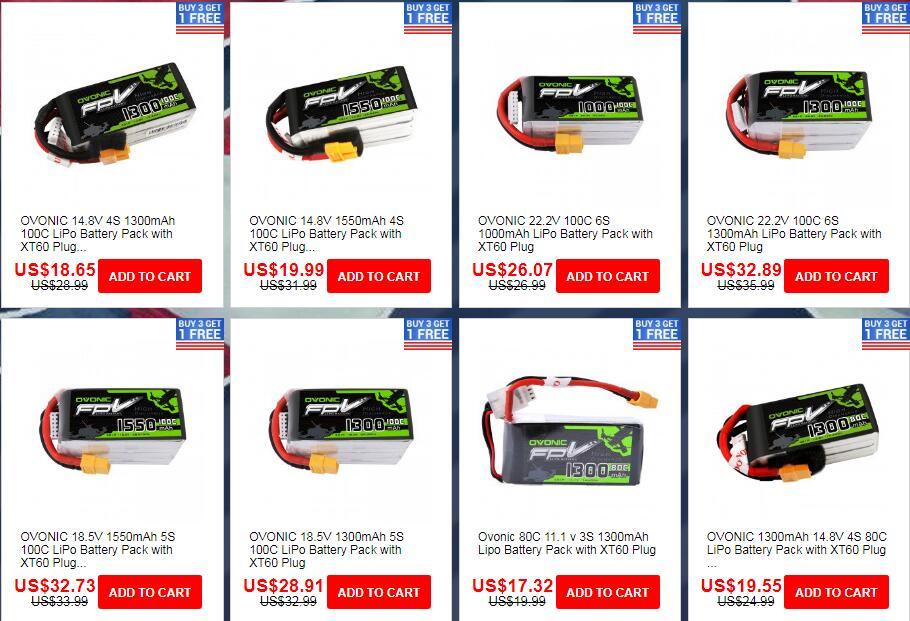
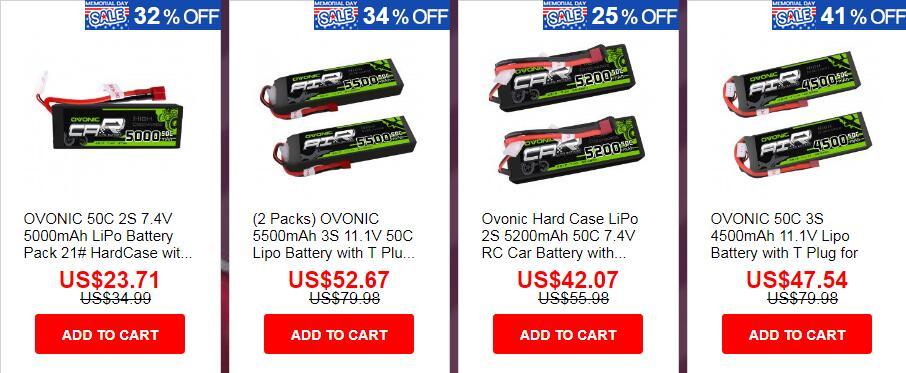

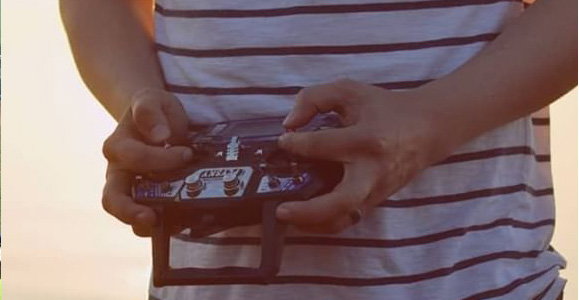



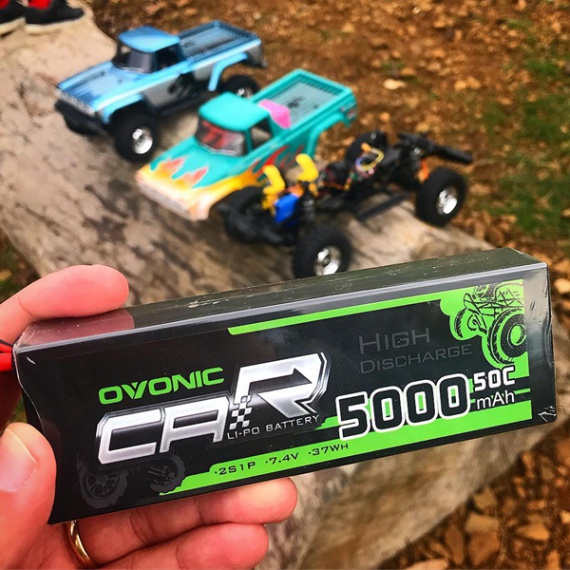














 only for your entire drone to crash due to a failed battery. With batteries is is usualy true that you get what you pay for. Some cheaper batteries that may be the same on paper in terms of specifications dont always last as long and the performance starts to drop after several charge/discharge cycles, whereas other top brand batteries take much longer to start showing signs of aging. Also some cheaper batteries experience large voltage drops as the capacity gets low which further reduce flight times. But then again you can argue that a cheaper battery might not last as long, but you can replace it more often since its cheaper. Either way here are a few of our suggested battery brands based on experience.
only for your entire drone to crash due to a failed battery. With batteries is is usualy true that you get what you pay for. Some cheaper batteries that may be the same on paper in terms of specifications dont always last as long and the performance starts to drop after several charge/discharge cycles, whereas other top brand batteries take much longer to start showing signs of aging. Also some cheaper batteries experience large voltage drops as the capacity gets low which further reduce flight times. But then again you can argue that a cheaper battery might not last as long, but you can replace it more often since its cheaper. Either way here are a few of our suggested battery brands based on experience.
